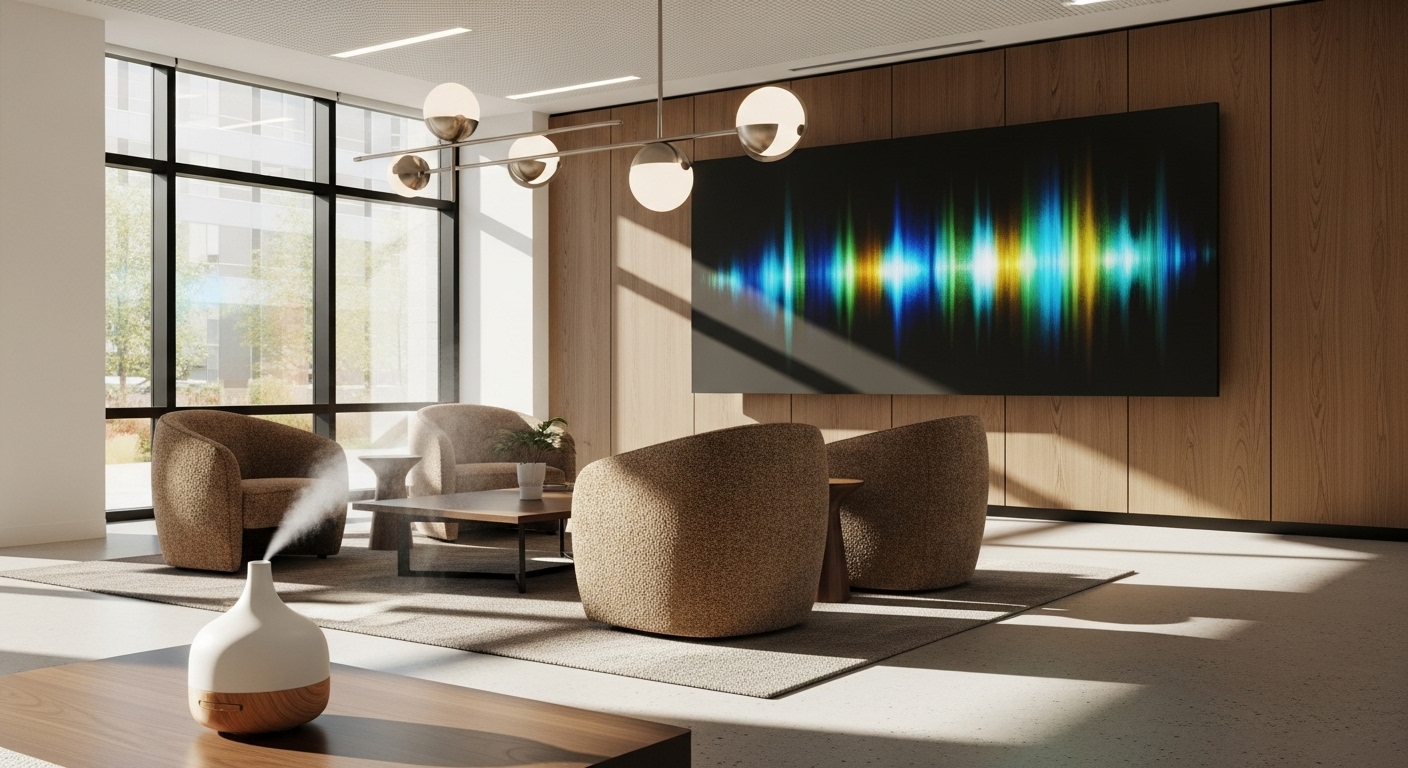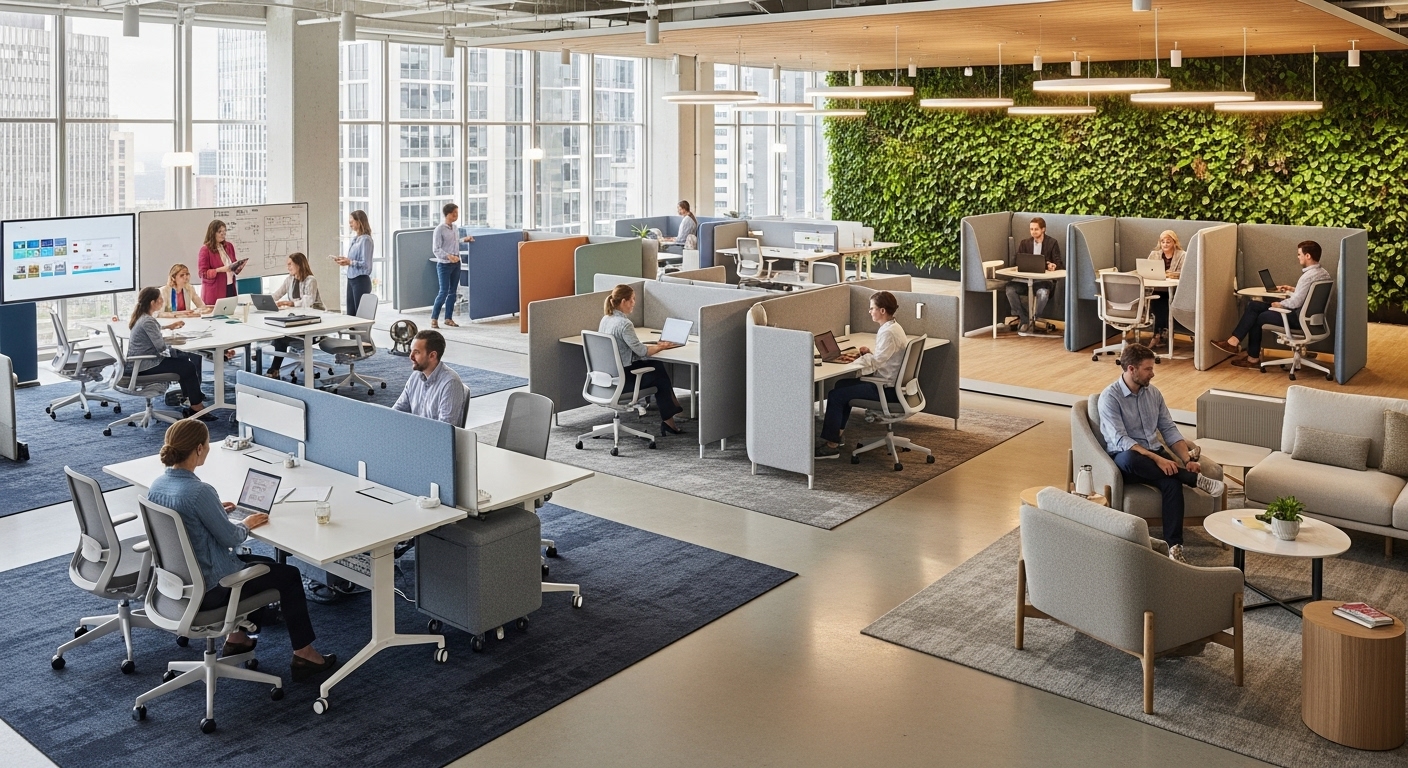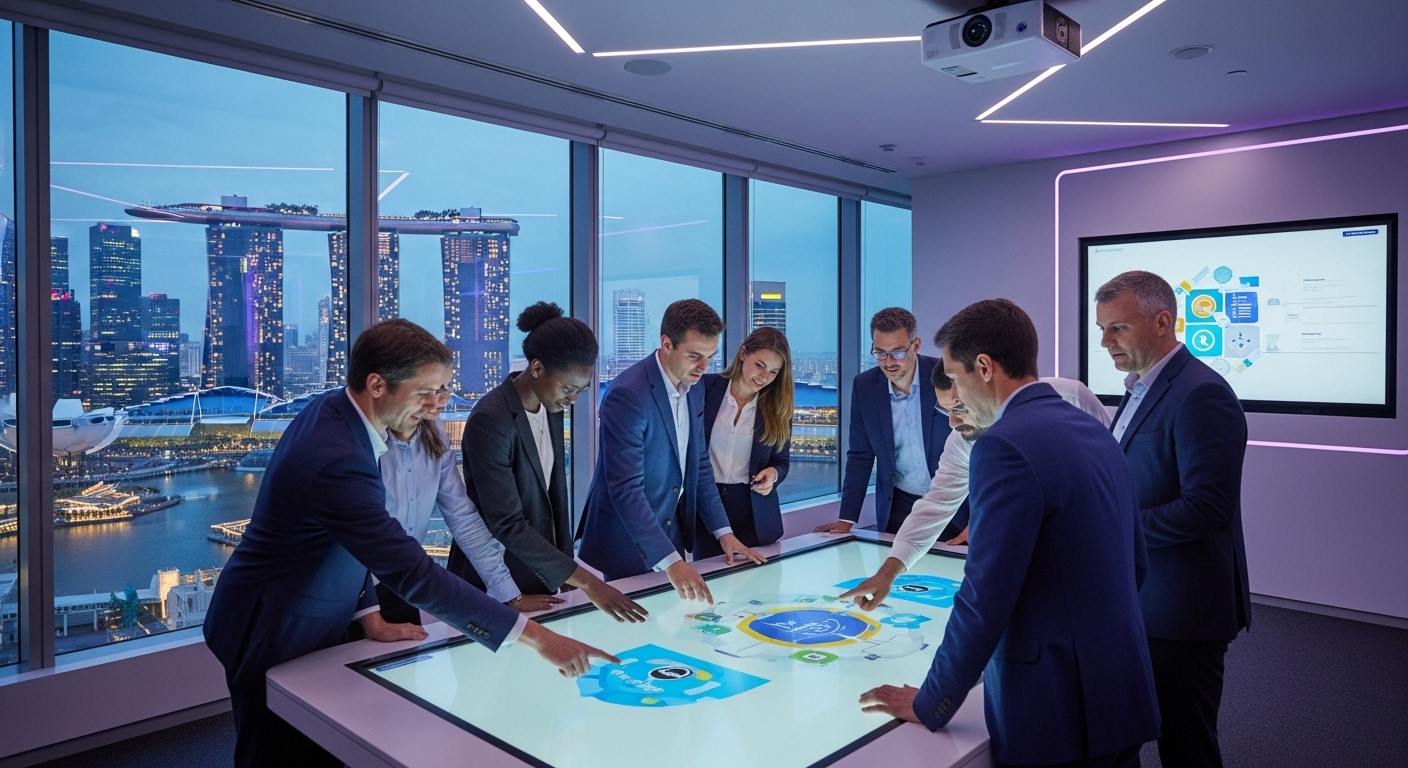In an age of digital saturation, the power of physical space has never been more significant. It’s no longer enough to simply hang a logo on the wall and call it branded. Today’s most successful environments—be they offices, retail stores, or hospitality venues—are crafting immersive experiences that engage all five senses. This is the essence of sensory branding: a strategic approach that transforms a physical location from a mere container into a powerful communication tool. By moving beyond purely visual cues, businesses can forge deeper emotional connections, enhance memory recall, and cultivate unwavering brand loyalty. This article serves as your blueprint to this experiential frontier. We will explore how to strategically deploy sight, sound, scent, and touch to create a cohesive and unforgettable brand narrative. Prepare to learn how to architect an environment that doesn’t just house your brand, but truly embodies it, leaving a lasting impression on every person who walks through your doors.
Beyond the Visual: Defining Sensory Branding in Physical Spaces
For decades, branding a space meant focusing almost exclusively on sight: logo placement, color palettes, and corporate artwork. While these elements remain crucial, they represent only one-fifth of our sensory capability. Sensory branding is the holistic practice of appealing to all five senses—sight, sound, scent, touch, and even taste—to create a rich, layered, and emotionally resonant brand experience. The core principle is that a multi-sensory environment is significantly more memorable and impactful than a unisensory one. Think about the powerful, involuntary memories a specific smell or song can evoke; sensory branding harnesses this psychological phenomenon for commercial and cultural benefit. It’s the difference between a generic coffee shop and one where the aroma of freshly ground beans, the curated indie-folk playlist, the warmth of a ceramic mug, and the comfortable texture of a worn leather chair all combine to say ‘welcome, relax, stay awhile.’ Research has consistently shown that engaging multiple senses can increase dwell time, influence purchasing decisions, and foster a stronger sense of brand connection. In a corporate setting, this translates to improved employee morale, collaboration, and a stronger embodiment of company culture. It’s about designing an atmosphere that communicates your brand values on a subconscious level, making the brand not just seen, but felt.
The Power of Sight: Strategic Visuals and Lighting
While sensory branding expands beyond the visual, sight remains the primary sense through which we interpret our surroundings. A strategic visual approach, however, goes far deeper than the logo. It encompasses lighting, materials, color psychology, and spatial arrangement. Lighting is one of the most powerful and often underutilized tools. It does more than just illuminate; it sculpts space, directs focus, and sets the mood. Dynamic lighting systems can shift in color and intensity throughout the day to align with natural circadian rhythms, boosting employee well-being in an office. In retail, focused spotlights can highlight premium products, while soft, ambient light creates an inviting, upscale atmosphere. Color psychology is another critical layer. The colors you choose for walls, furniture, and accents have a direct impact on emotion and behavior. Blues can evoke feelings of trust and calmness, making them suitable for financial institutions, while yellows and oranges can stimulate energy and creativity, ideal for collaborative workspaces. The choice of materials also sends a strong visual and brand message. Reclaimed wood and exposed brick can signal authenticity and sustainability, while glass, chrome, and polished concrete convey modernity and innovation. The key is to create a visual narrative that is consistent and intentional, where every element works together to reinforce the core identity of the brand.
The Unspoken Narrative: Curating a Brand Audioscape
What does your brand sound like? If you can’t answer that question, you’re missing a critical component of experiential design. The audioscape, or soundscape, of a space is a powerful driver of perception and behavior. Sound—or the intentional lack thereof—can dramatically alter mood, perceived wait times, and even spending habits. The most common application is a branded playlist. The music should be a direct reflection of the brand’s personality: a luxury retailer might opt for sophisticated classical or down-tempo electronic music, while a youth-focused brand might curate a playlist of emerging indie artists. The tempo and volume are just as important; faster music can increase table turnover in a restaurant, while slower, quieter music encourages customers to linger and browse. But the audioscape extends beyond music. Consider the ambient sounds of your space. In an open-plan office, acoustic panels and sound-masking systems (which emit a soft, unobtrusive background sound) can be used to reduce distracting conversations and enhance focus. Conversely, a brand centered on nature and tranquility might introduce subtle sounds of flowing water or birdsong. Even the sounds of the equipment and materials matter. The satisfying, solid click of a heavy door, the quiet hum of high-quality machinery, or the near-silence in a designated quiet zone all contribute to the overall sensory narrative and the perception of quality.
Scent-sational Marketing: The Psychology of Olfactory Branding
Of all the senses, scent is the most directly linked to memory and emotion. The olfactory bulb is part of the brain’s limbic system, an area closely associated with memory and feeling. This is why a whiff of a particular perfume or food can instantly transport you back in time. Scent marketing, or olfactory branding, leverages this powerful connection to create lasting brand associations. Many hotels have mastered this, diffusing a custom, signature scent throughout their lobbies that becomes inextricably linked to their brand of luxury and comfort. Retailers use scent to create a more pleasant shopping experience and to reinforce their brand identity. For instance, a brand selling leather goods might use a subtle scent of high-quality leather and cedar to communicate craftsmanship. Implementing a scent strategy requires subtlety and sophistication. The goal is to create a pleasant ambient aroma, not an overpowering perfume. The scent must be congruent with the brand and the environment. A clean, citrus scent might be perfect for a fitness center, while a warm, vanilla-based scent could enhance a bakery or a cozy bookstore. For office environments, subtle, clean scents like green tea or light citrus can help create a sense of freshness and alertness, positively impacting the employee experience and reinforcing a brand image of a clean, modern, and employee-focused company.
The Tactile Connection: Materials, Textures, and Interactive Elements
In our increasingly digital world, the sense of touch offers a grounding, tangible connection to reality. The tactile experience of a space—what we feel—plays a vital role in our perception of quality, comfort, and luxury. A brand can communicate its values through the materials it chooses. Consider the difference between a flimsy, plastic reception desk and a solid, cool marble or warm, handcrafted wood one. The latter communicates permanence, quality, and attention to detail. This extends to everything an employee or customer might touch: the weight of the cutlery in a cafe, the softness of the upholstery on a chair, the texture of a feature wall, or the smooth, cool surface of a metal door handle. A tactile strategy should prioritize comfort and quality in functional items while using unique textures to create points of interest and reinforce the brand story. For example, a company focused on natural, organic products might use raw, natural textiles like linen and wool in its seating areas. A tech company might opt for sleek, smooth surfaces combined with interactive touch screens. Incorporating interactive elements that invite touch is a powerful way to engage visitors, turning passive occupants into active participants in the brand experience. The simple act of touching and feeling materials creates a physical memory, making the brand interaction far more personal and memorable.
Tying It All Together: Creating a Cohesive Multisensory Experience
The true power of sensory branding is unlocked not by deploying each element in isolation, but by orchestrating them into a single, cohesive symphony. A disjointed sensory experience can be jarring and confusing. Imagine a spa that looks serene and minimalist (sight) but plays loud, upbeat pop music (sound) and has a strong, artificial floral scent (smell). The conflicting signals undermine the intended message of tranquility. The goal is harmony and reinforcement. To achieve this, it’s essential to develop a sensory blueprint or map for your space. Start with your core brand identity: what are the three to five words that define your brand’s personality (e.g., ‘innovative, bold, connected’ or ‘calm, natural, authentic’)? Then, brainstorm how each of the senses can express those attributes. How can your lighting and color scheme convey ‘innovative’? What does ‘calm’ sound like? What does ‘authentic’ feel like? This process ensures that your visual design, audioscape, scent profile, and tactile elements are all telling the same story. Consistency is paramount. Your sensory signature should be consistent across all physical touchpoints, from your headquarters to your retail locations, to create a recognizable and reliable brand world that people instantly connect with, remember, and want to return to.
Conclusion
Architecting a branded space today means moving far beyond the two-dimensional world of logos and colors. It requires a deep, empathetic understanding of the human experience. By embracing a multisensory approach, you are not just decorating a space; you are composing an experience. The experiential blueprint is about layering sight, sound, scent, and touch to create a powerful, subliminal narrative that communicates your brand’s essence in a way that words alone cannot. When the visual aesthetics, the ambient sound, the signature scent, and the tactile quality of your environment all align, they create a formidable and lasting impression. This holistic strategy transforms your physical space from a cost center into a strategic asset—one that can deepen customer loyalty, energize employee culture, and build a brand that is not just recognized, but truly felt. In the competition for attention and affection, the brands that master this sensory language will be the ones that build the most meaningful and enduring connections. Your space is your stage; it’s time to direct a full sensory performance.





